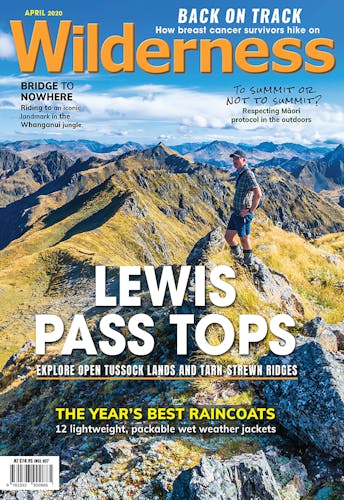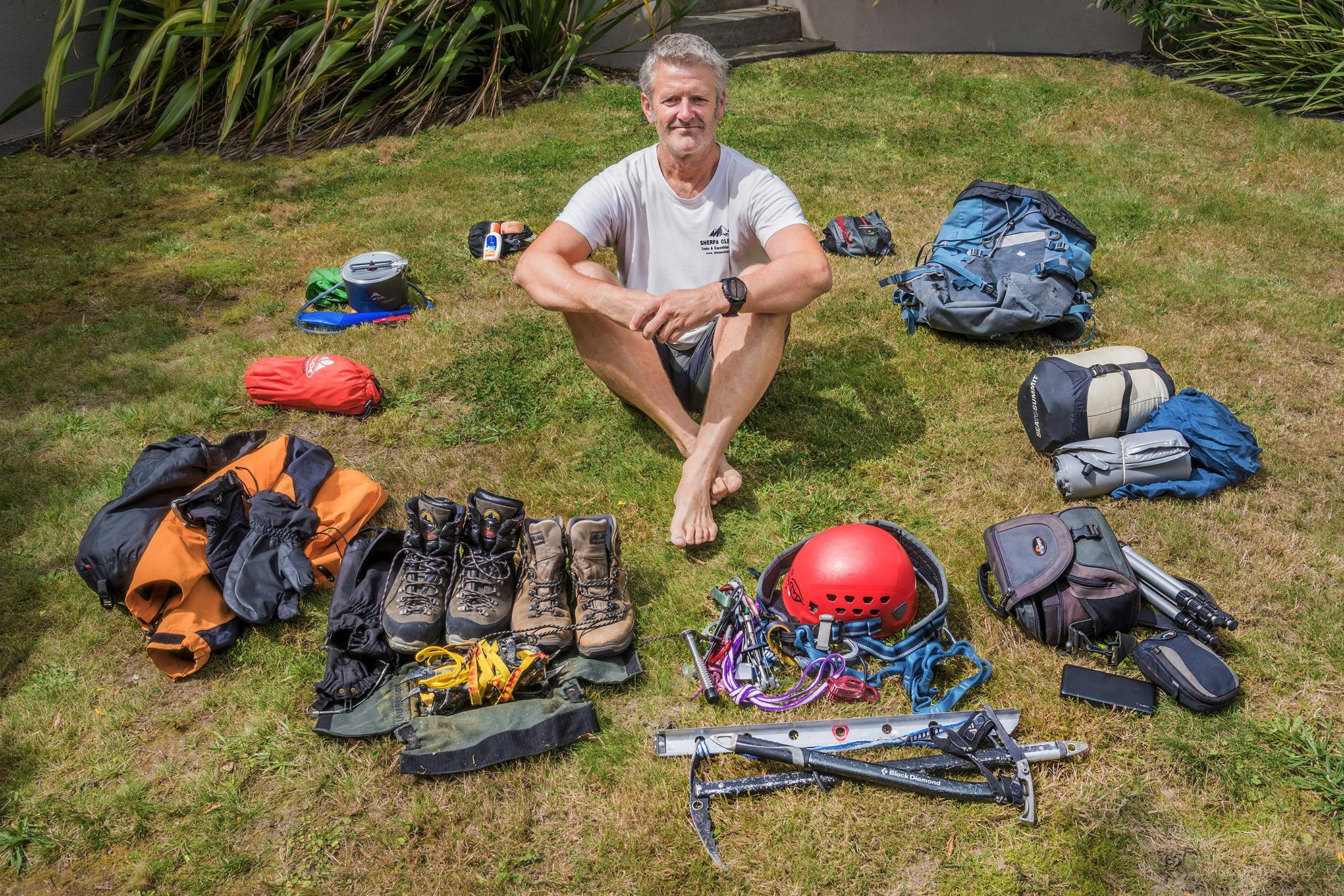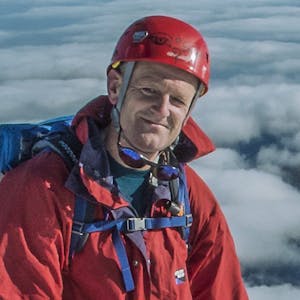Peter Laurenson is the editor of the Federated Mountain Club’s quarterly publication Backcountry and a keen photographer. His trips these days are a compromise between his love of moderate alpine climbing and the need to keep his pack weight ‘knee friendly’ – or under 20kg.
Pack
I use a Macpac Ascent 65l pack because it provides a self-imposed load limitation so my ambition doesn’t exceed my capabilities. A waterproof pack liner keeps gear dry.
Shelter
Unless there’s a tent in my trip party with room for me, I take a Vaude bivvy bag, which is also a great ‘insurance policy’ in case the weather turns to custard.
Cooking
I pack an MSR Windburner with a 2.5-litre pot – it’s light, stable and sufficiently voluminous for dinner cooking. Also a bowl, cup, spoon and a Swiss Army Knife with a lockable blade.
Medical
A basic first aid kit including webbed medical tape, knee-friendly Voltaren 75s, sunscreen, sawn-off toothbrush, small towel/flannel, toilet paper. At least one PLB within the party.
Hydration
If conditions aren’t freezing, I’ll take my two-litre Camelbak hydration reservoir. I find this encourages me to drink more frequently. When it’s too cold to use the Camelbak, I fill a bottle from the nearest river or hut.
Sleeping
I use a silk liner with my Macpac Sanctuary 800 sleeping bag – mostly for hygiene but also for a cool alternative in hot weather. I pack them into a waterproof compression bag to ensure they stay dry. If I’m camping, I’ll pack a Therm-A-Rest Trail Scout half mattress.
Clothing
I generate more heat than some, so a three-layer system is nearly always sufficient – thermal top and bottom, fleecy/shorts or trousers, Earth Sea Sky raincoat and Vent X overtrousers. Other clothing includes a Macpac beanie, Gore-Tex gloves, lightweight mittens, two pairs of socks and undies, long sleeve glacier shirt, t-shirt and sunglasses.
Footwear
Scarpa tramping boots or La Sportiva semi-rigid climbing boots. I like Alpac canvas gaiters because they’re so easy to put on. If I’m going above the snowline, I’ll take my Grivel 10-point crampons.
Climbing gear
My gear is oriented towards grade 1 and 2 alpine climbs. It includes a helmet, two ice axes, harness, belay device, short and long prusiks, a limited range of technical anchors and a 50 or 60m rope (shared across trip members).
Camera gear
Photography is a huge part of my trips. When climbing, I use a compact Lumix TZ220 which allows DSLR manual-type photography, plus action shooting while on the move. On less demanding trips, I use a Nikon D750.
Navigation
I use the old-school system of maps and compass, but also enjoy using my Garmin Fenix 5 watch with an altimeter to more easily track my progress.








